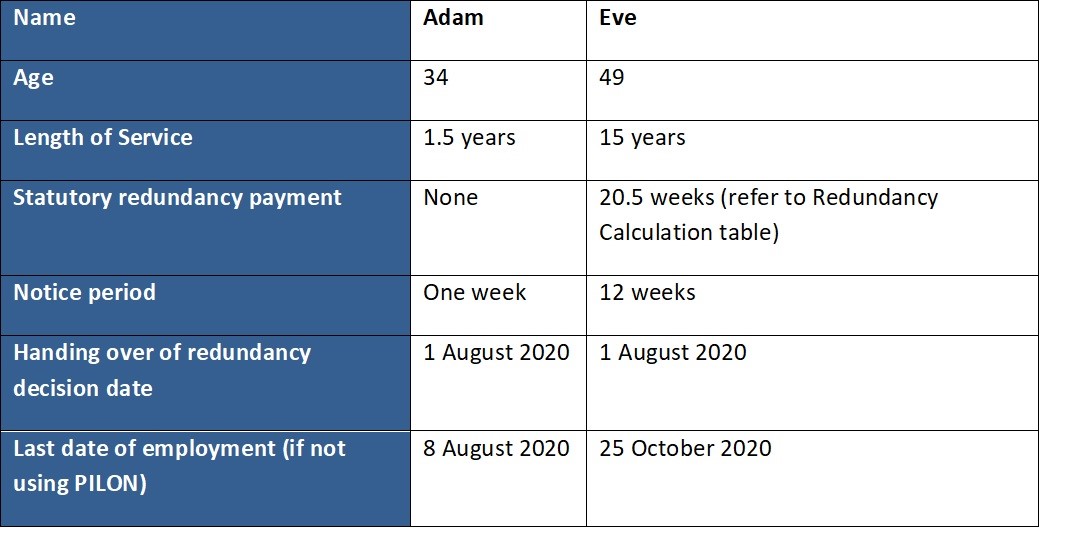Exploring the Operational Characteristics of Company Redundancy and Its Long-Term Sustainability

Redundancy Methods for Organization Continuity
In order to ensure continuous operations, businesses need to implement reliable redundancy methods for business continuity. Redundancy in this context refers to the duplication of important components or functions within a system to minimize the influence of potential failings. By including redundancy techniques, companies can boost their strength versus disruptions brought on by various variables such as natural disasters, tools failings, or cyber-attacks.
One common redundancy strategy is the implementation of back-up systems and data storage remedies. This entails developing duplicates of important information and systems that can be turned on in situation of a primary system failing. Additionally, companies can establish repetitive interaction networks and source of power to preserve connectivity and procedures throughout unanticipated occasions.
In addition, cross-training employees to carry out numerous functions within the firm can work as a valuable redundancy strategy. If key personnel are inaccessible due to health problem or other factors, this makes certain that necessary tasks can still be lugged out even. In general, efficient redundancy approaches are essential for services to copyright functional continuity and minimize the influence of potential disturbances.
Impact of Redundancy on Organizational Resilience
Offered the important role redundancy strategies play in ensuring organization continuity, discovering the effect of redundancy on business strength comes to be crucial for comprehending the alternative operational characteristics of a company. Business durability refers to an entity's ability to adapt to interruptions, recover from setbacks, and transform when essential while maintaining core functions. Redundancy, when tactically carried out, can considerably add to boosting a company's durability despite unforeseen obstacles. By having back-up systems, personnel, or processes in position, firms can much better withstand shocks and proceed procedures with minimal disturbance.
Furthermore, redundancy can cultivate technology and creativity within a company as staff members really feel empowered to take computed risks, recognizing that there is a safety and security net to support them in case of failure. Generally, the impact of redundancy on organizational strength is extensive, forming the long-lasting sustainability and success of a company.
Stabilizing Performance and Versatility in Redundancy
Accomplishing a harmonious equilibrium in between operational efficiency and flexible flexibility is a pivotal challenge in the critical release of redundancy within companies. Reliable procedures are important for preserving efficiency and cost-effectiveness, making certain that sources are utilized ideally. Nonetheless, excessive emphasis on effectiveness alone can bring about rigidness, making it hard for companies to adjust to unforeseen changes or difficulties. On the other hand, adaptability allows organizations to respond nimbly to developing conditions, promoting development and resilience. Yet, as well much versatility without a strong operational foundation can result in ineffectiveness and incongruity.
To stabilize effectiveness and flexibility in redundancy planning, organizations should carefully examine their functional needs, market characteristics, and strategic objectives. Inevitably, locating the right equilibrium between effectiveness and flexibility is important for building a lasting and resilient organization in the face of unpredictability.
Long-Term Sustainability Via Redundancy Planning
To make certain enduring viability and stability, organizations have to purposefully straighten their redundancy planning with lasting sustainability objectives, consequently harmonizing operational efficiency with flexible flexibility. Lasting sustainability via redundancy planning entails more than simply temporary cost-cutting measures. It requires an extensive calculated approach that prepares for future difficulties and opportunities. Firms must watch redundancy not as a reactive solution to immediate issues but as a positive approach for long-term success. By integrating redundancy preparation with sustainability purposes, companies can develop a resilient framework that can stand up to numerous market fluctuations and internal modifications.

Aggressive Steps for Sustainable Firm Procedures
Just how can business proactively enhance their operational sustainability for long-term success? Executing proactive steps is crucial for companies aiming to make certain lasting operations.
Additionally, cultivating a culture of continuous improvement and discovering within the organization can enhance flexibility to altering market conditions and customer needs. Urging worker involvement in decision-making procedures and supplying chances for expert growth can improve morale, productivity, and total efficiency. Developing clear goals, keeping track of key efficiency indicators, and consistently evaluating progress are crucial parts of proactive sustainability monitoring.
Collaborating with providers, customers, and various other stakeholders to advertise sustainable methods throughout the supply chain can develop a ripple result of favorable impact - redundancy pay if company goes bust. By taking proactive actions in the direction of operational sustainability, firms can build strength, drive development, and safeguard their long-term success in an ever-evolving organization landscape
Conclusion

In the realm of business administration, the strategic release of company redundancy stands as a crucial yet intricate technique that necessitates a fragile balance in between operational effectiveness and lasting stability. By exploring the functional characteristics that underpin firm redundancy and evaluating its wider implications for business strength and versatility, a nuanced understanding of just how redundancy strategies can form the future trajectory of a company begins to unravel.Given the essential role redundancy approaches play in making sure business continuity, discovering the influence of redundancy on organizational durability comes to be crucial for recognizing the alternative operational dynamics of a company. Generally, the influence of redundancy on business resilience is profound, shaping the long-lasting sustainability and success of a business.
In verdict, understanding the operational dynamics of firm redundancy is essential for making certain long-term sustainability.